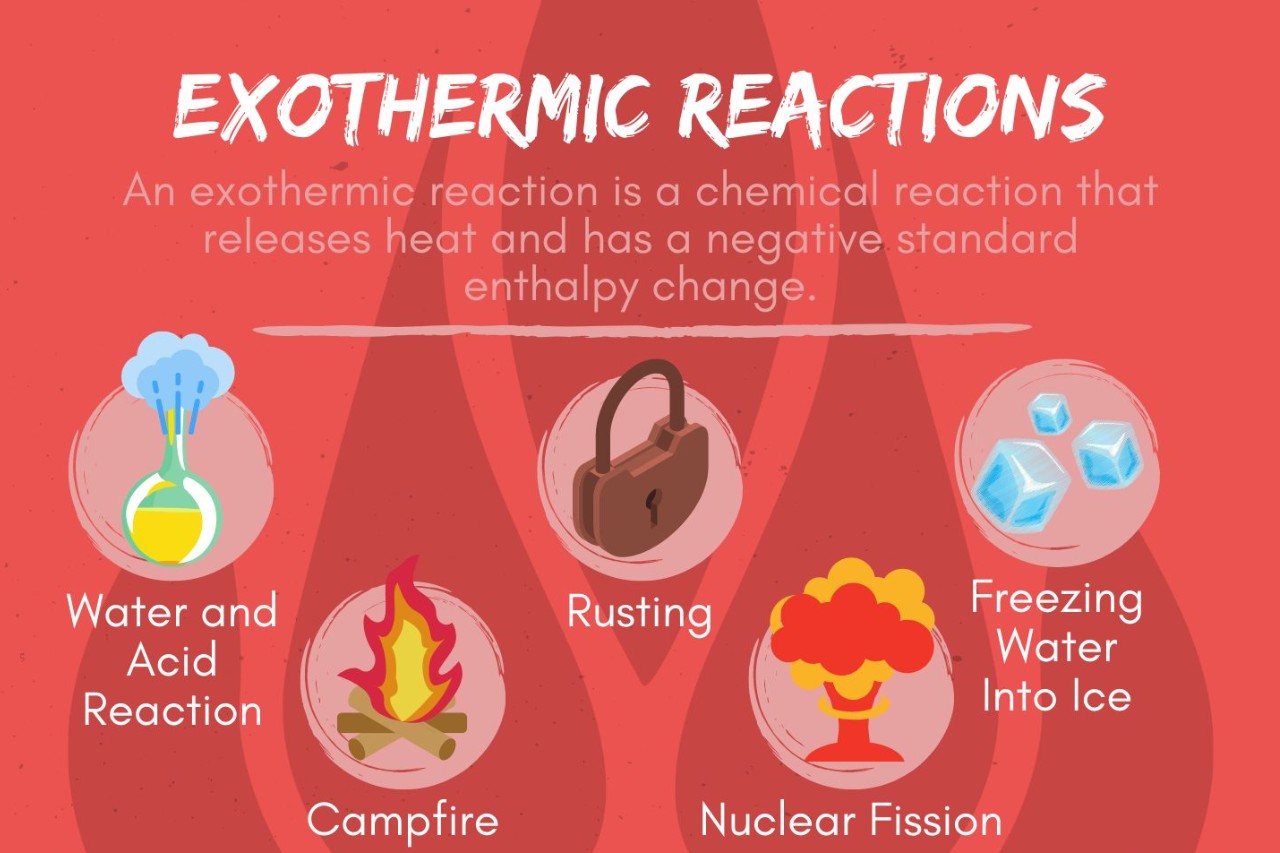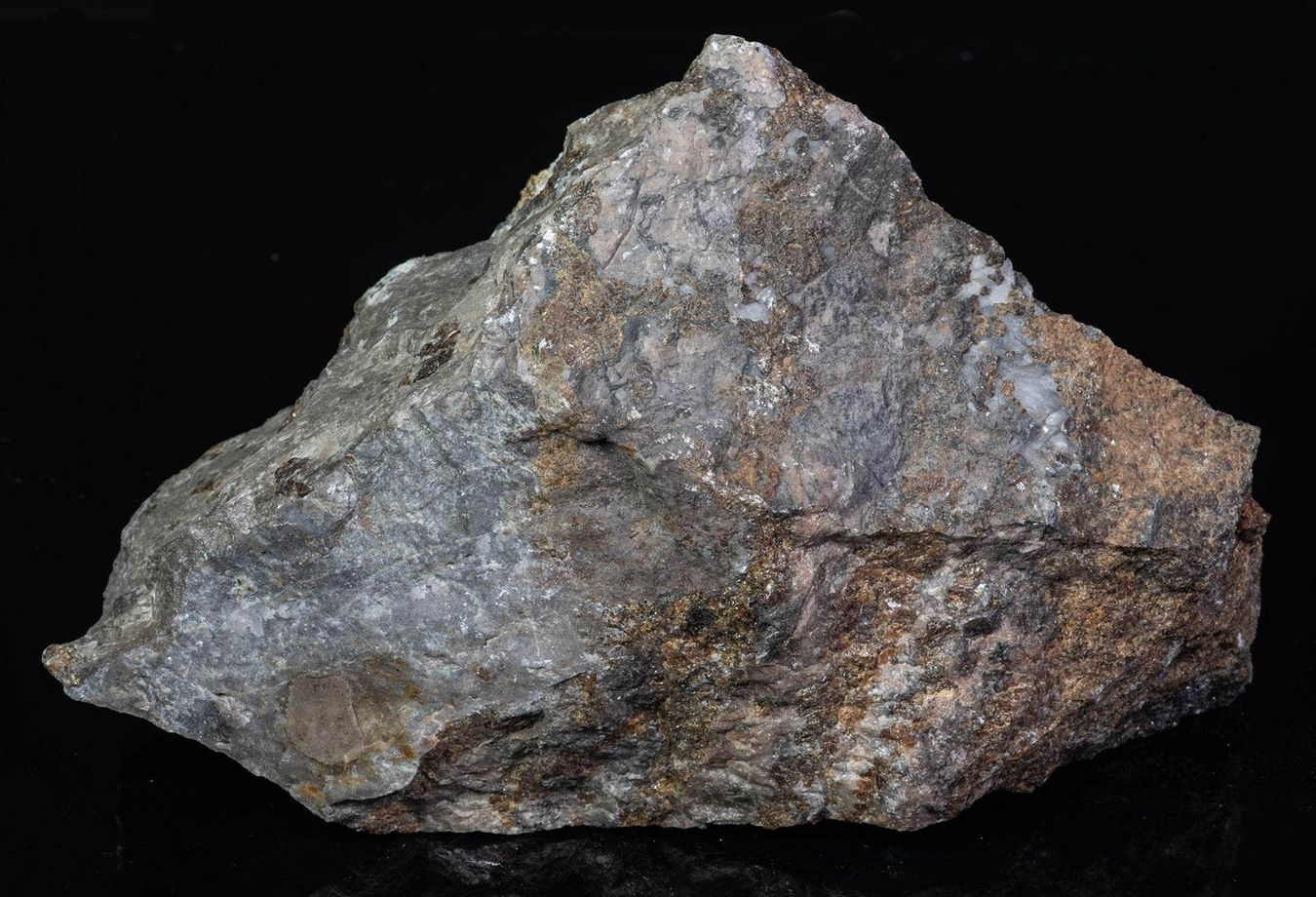
Exothermic reactions are a fascinating concept in the world of chemistry. They involve the release of heat energy during a chemical reaction, resulting in a rise in temperature. These reactions play a vital role in various natural and artificial processes, from the energy production in the sun to the burning of fuels in our everyday lives. Understanding exothermic reactions is crucial for scientists and engineers alike, as it allows for the optimization of various chemical processes.
In this article, we will explore 14 astounding facts about exothermic reactions. These facts will not only deepen your knowledge of chemistry but also leave you in awe of the incredible phenomena that occur during exothermic reactions. So, let’s dive into the world of exothermic reactions and discover the fascinating science behind their heat-releasing magic.
Key Takeaways:
- Exothermic reactions release heat, powering everyday activities like combustion, energy production, and self-heating packs. They occur naturally and play a crucial role in our lives.
- Understanding exothermic reactions helps us appreciate their significance in nature, energy production, and daily life. They can be harnessed for practical applications and have both beneficial and potentially hazardous effects.
Exothermic reactions release heat.
One of the most fascinating aspects of exothermic reactions is that they release heat, often in the form of light and sound. These reactions occur when the products have lower energy than the reactants, resulting in the release of energy in the form of heat.
Exothermic reactions are spontaneous.
Unlike endothermic reactions, exothermic reactions are typically spontaneous. This means that they occur naturally without the need for external intervention. The release of heat in exothermic reactions drives the reaction forward, making it energetically favorable.
Combustion reactions are a common example of exothermic reactions.
When a substance reacts with oxygen to produce carbon dioxide and water, it usually involves an exothermic reaction. Combustion reactions, such as burning a piece of paper or wood, release heat and light, making them prime examples of exothermic processes.
Exothermic reactions play a crucial role in daily life.
From the digestion of food in our bodies to the explosion of fireworks in the sky, exothermic reactions are present in countless aspects of our daily lives. These reactions power engines, generate electricity, and even provide warmth through combustion processes.
The concept of enthalpy change is central to exothermic reactions.
In exothermic reactions, the enthalpy change is negative, indicating a release of energy. The enthalpy change can be calculated by subtracting the final enthalpy of the products from the initial enthalpy of the reactants.
Exothermic reactions involve a decrease in potential energy.
As exothermic reactions release energy, the potential energy of the system decreases. This decrease in potential energy corresponds to a stabilization of the products compared to the reactants.
Exothermic reactions can be harnessed for various applications.
The energy released by exothermic reactions has practical applications in various fields. It can be used to generate electricity, power vehicles, and even drive industrial processes like steel production and chemical synthesis.
Exothermic reactions are used in self-heating packs.
Self-heating packs, often used for hand warmers or food heating, rely on exothermic reactions. These packs contain reactants that undergo an exothermic reaction when activated, providing heat without the need for an external heat source.
Exothermic reactions can be dangerous.
While exothermic reactions have numerous beneficial applications, they can also be hazardous if not properly controlled. In certain cases, exothermic reactions can result in explosions or release toxic gases, emphasizing the importance of safety precautions.
The heat released in exothermic reactions can be quantified.
Through calorimetric measurements, scientists can determine the amount of heat released in exothermic reactions. Calorimeters are used to measure the temperature change of the surrounding environment, allowing for the calculation of the heat released.
Exothermic reactions are an essential component of energy production.
Many energy production methods, such as burning fossil fuels or nuclear reactions, rely on exothermic processes to generate heat and power. These reactions drive turbines, produce steam, and ultimately generate electricity.
Exothermic reactions can be spontaneous even at low temperatures.
Although exothermic reactions typically occur at higher temperatures, some reactions can still be spontaneous at lower temperatures. This phenomenon is known as “cold combustion” and is observed in certain compounds and chemical reactions.
Exothermic reactions can change the state of matter.
Exothermic reactions can cause substances to change from one state to another. For example, when ice melts and becomes water, it is an exothermic process that releases heat. The opposite process, freezing, is an endothermic reaction.
Exothermic reactions occur in nature and the universe.
Exothermic reactions are not limited to laboratories or industrial settings. They occur abundantly in nature and throughout the universe, powering stars, volcanic eruptions, and various chemical processes that shape our planet and the cosmos.
Overall, the 14 astounding facts about exothermic reactions highlight their significance in various aspects of our lives, from energy production to everyday activities. Understanding the principles behind exothermic reactions can help us appreciate the complex and fascinating world of chemistry.
Conclusion
Exothermic reactions are truly fascinating phenomena that occur in the world of chemistry. They play a crucial role in our everyday lives, from the combustion process that powers our vehicles to the metabolic reactions that occur within our own bodies. Understanding the concept of exothermic reactions helps us appreciate the energy changes that take place during chemical reactions.Through this article, we have explored 14 astounding facts about exothermic reactions. From their definition and examples to their potential dangers and applications, it is clear that exothermic reactions are a fundamental aspect of chemical processes. Whether it’s the explosive force of fireworks or the comforting warmth of a cozy fire, exothermic reactions surround us.By delving into the world of exothermic reactions, we gain a deeper understanding of the energy transformations that occur within the realm of chemistry. So the next time you witness a glowing ember or observe chemical reactions in action, remember the remarkable power and beauty of exothermic reactions.
FAQs
Q: What is an exothermic reaction?
A: An exothermic reaction is a chemical reaction that releases energy in the form of heat or light. It is characterized by a decrease in the enthalpy of the system.
Q: What are some examples of exothermic reactions?
A: Combustion, such as burning wood or fuel, is an example of an exothermic reaction. Other examples include the reaction between baking soda and vinegar, the rusting of iron, and the setting of concrete.
Q: What are the potential dangers of exothermic reactions?
A: Exothermic reactions can be highly dangerous if not properly controlled. They can release large amounts of heat or generate explosive gases. It is important to follow safety precautions and handle reactive substances with care.
Q: How are exothermic reactions used in everyday life?
A: Exothermic reactions have numerous practical applications. They are used in industries such as energy production, manufacturing, and pharmaceuticals. They also play a crucial role in everyday activities like cooking and heating.
Q: Can exothermic reactions be reversed?
A: Yes, exothermic reactions can be reversed. These reactions are reversible, meaning they can proceed in both the forward and backward directions. The reverse process, however, is known as an endothermic reaction, which absorbs energy from the surroundings.
Exothermic reactions are just the beginning of your journey into the fascinating world of science. Dive deeper into the captivating realm of chemistry and uncover a treasure trove of mind-boggling facts. Explore the intricacies of enthalpy, a fundamental concept in thermodynamics, and be amazed by its extraordinary implications. Brace yourself for the awe-inspiring power of thermonuclear bombs, where energy release reaches unimaginable heights. Embark on this thrilling adventure and expand your knowledge of the incredible phenomena that shape our universe.
Was this page helpful?
Our commitment to delivering trustworthy and engaging content is at the heart of what we do. Each fact on our site is contributed by real users like you, bringing a wealth of diverse insights and information. To ensure the highest standards of accuracy and reliability, our dedicated editors meticulously review each submission. This process guarantees that the facts we share are not only fascinating but also credible. Trust in our commitment to quality and authenticity as you explore and learn with us.


